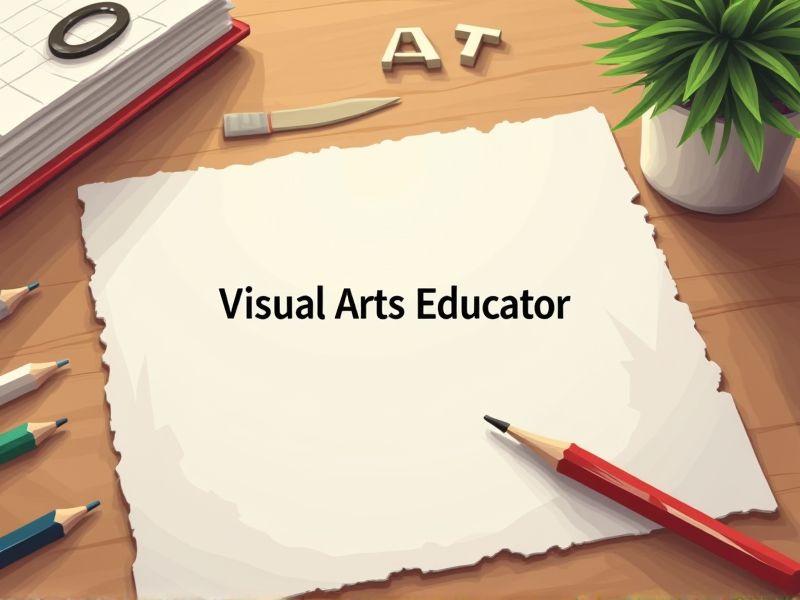
Visual arts educators require specific certifications to establish their credibility and ensure quality teaching standards. Certifications provide educators with formal recognition of their skills and knowledge, differentiating them in a competitive field. They also help align teaching practices with industry standards and educational regulations. These are some vital certifications you may need as a Visual Arts Educator.
State Art Educator Credential
Acquiring a State Art Educator Credential often ensures that visual arts educators meet standardized qualifications, which generally leads to more consistent teaching quality across schools. Credentialing typically involves comprehensive knowledge and pedagogical proficiency in visual arts, which aids in maximizing student learning outcomes. Holding this credential usually provides educators with greater job security and competitive salaries, aligning with the demand for well-qualified teachers. State credentials frequently ensure educators adhere to legal and ethical teaching frameworks, safeguarding educational standards and practices.
National Art Education Association Certification
Achieving National Art Education Association Certification for visual arts educators establishes a standardized level of teaching ability, which enhances teaching effectiveness in the classroom. It ensures the educator is equipped with current methodologies and knowledge, aligning their skills with contemporary educational standards. Certified educators often experience increased job opportunities and career advancement, given the recognized quality assurance of their credentials. This certification can also lead to improved student outcomes, as educators are better prepared to foster creative and critical thinking skills in their students.
K-12 Teaching Certification with Art Endorsement
Possessing a K-12 Teaching Certification with an Art Endorsement equips educators with the standardized skills required for effectively instructing visual arts at varying levels of education. The certification ensures that teachers meet state educational standards, which helps maintain a consistent quality of art education across institutions. Art Endorsement specifically enriches teachers' capability to deliver specialized art curriculum, integrating essential art techniques and history into the classroom. Certified art educators are more likely to develop impactful art programs, fostering creativity and critical thinking in students.
Advanced Studio Art Certification
Advanced Studio Art Certification enhances the educator's technical skills, allowing them to provide more comprehensive instruction. It broadens the educator's understanding of diverse artistic styles, thereby enriching the classroom experience. The certification fosters an environment of continuous learning, essential for staying updated with contemporary art practices. It elevates the educator's credibility and attractiveness to prospective employers or institutions.
Arts Integration Certification
Arts Integration Certification enhances teaching strategies, leading to improved student engagement and learning outcomes in visual arts. Certification provides educators with structured techniques for incorporating various disciplines, fostering cross-curricular connections. With this certification, educators gain a competitive edge in the job market, reflecting a commitment to professional growth. Access to a network of certified peers and resources supports continuous development and innovation in arts education.
Digital Arts Instruction Certification
Schools increasingly incorporate technology into their curricula, creating a demand for educators skilled in digital arts. Possession of a Digital Arts Instruction Certification equips visual arts teachers with the essential tools and knowledge to engage students through modern media. Educators with this certification can effectively prepare students for careers in a competitive digital landscape. Certification validates an educator's proficiency, potentially leading to enhanced career advancement opportunities.
Visual Literacy Certification
A Visual Literacy Certification equips visual arts educators with the skills to analyze and interpret visual information, which is crucial in teaching students to understand and create visual content effectively. As the digital age inundates society with images and multimedia, educators with this certification can guide students in critically evaluating visual messages, enhancing their media literacy. Holding a certification may enhance an educator's professional credibility, potentially leading to career advancement and recognition within educational institutions. Visual Literacy Certification offers structured understanding of visual culture, which is essential in teaching diverse forms of contemporary visual arts.
Inclusive Arts Education Certification
Inclusive Arts Education Certification enables visual arts educators to effectively accommodate diverse learners, fostering an environment where all students, regardless of ability, can engage with art. Without proper training, educators might unknowingly create barriers, hindering some students' participation and creativity. Certification provides educators with strategies to adapt lessons and materials, ensuring equitable access to artistic expression. As schools become more diverse, certification ensures the curriculum reflects and addresses the needs of all students, promoting a comprehensive approach to learning.
Curriculum Development for Visual Arts Certification
Curriculum development for Visual Arts Certification equips educators with structured methodologies, enhancing their ability to deliver content effectively. Without a well-defined curriculum, educators may lack consistency, potentially leading to learning gaps in student understanding. Certification ensures educators are updated with cutting-edge practices and technologies, permitting them to engage students creatively. Effective curriculum development contributes to the establishment of measurable learning outcomes, thereby fostering a coherent educational progression in visual arts.
Cross-Disciplinary Teaching Certification
Cross-disciplinary teaching certification equips visual arts educators with the ability to integrate other subjects, enhancing students' critical thinking and creativity. By understanding connections between disciplines, educators can develop more comprehensive and engaging curricula that resonate with diverse learners. This certification fosters adaptability, preparing educators to meet evolving educational demands and employment standards. Moreover, it supports collaboration with colleagues from different fields, enriching the educational environment.
Summary
As a visual arts educator, acquiring certifications can significantly enhance your teaching credentials and professional standing. The enhanced qualifications often lead to advanced career opportunities and increased salary potential. Students may benefit from your updated skills and methodologies, leading to improved learning outcomes. Certification can also provide access to a broader network of art education professionals, fostering further collaboration and growth.
